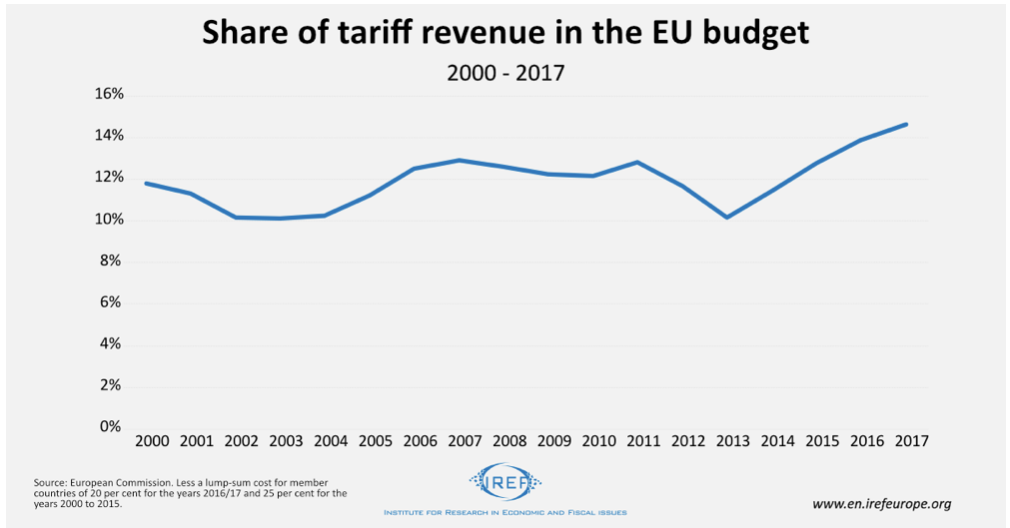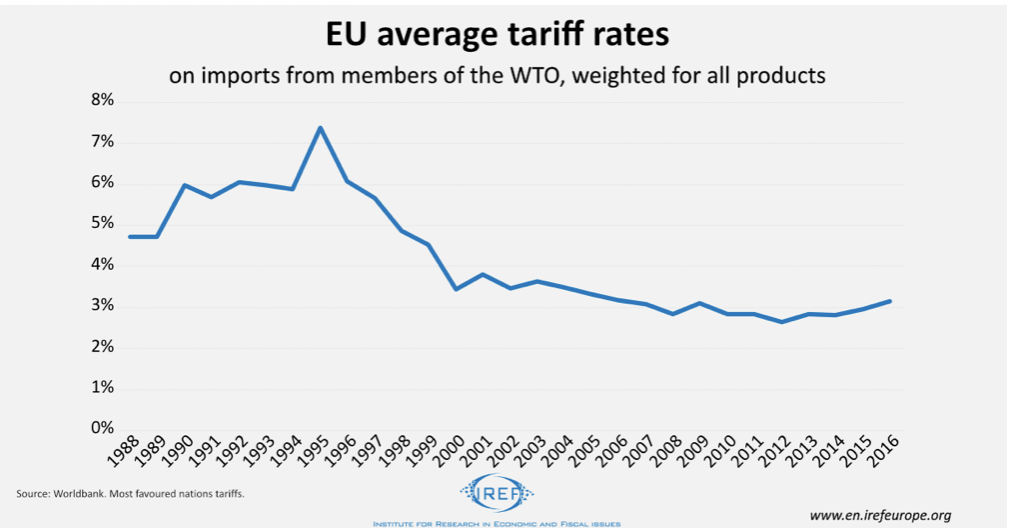The collection of tariffs on imports not only involves direct costs, which is the price of the tariff itself, but also numerous indirect costs. Civil servants, as an example, employed in the collection process add to the overall financial burden. So do the importers hiring employees to do the paperwork or the delays accrued shipping the goods to customers. Traffic jams from the fleet of slowed down shipments are also a problem. For example, the UK government carried out a simulation to test how to manage the truck roadblocks that are expected in the first weeks after Brexit, as tariffs between British and EU borders are reintroduced. According to the estimates, the costs due to the delays provoked by the collection of tariffs on imports from the European Union would run as high as 33 billion Euro based on 2017 trade dat). This is not good news, especially if one considers that tariffs currently contribute “just” €25.5 billion to the EU budget.
Opportunity Costs: Customs Officers or Teachers?
Of course, the collection of tariffs means revenue for the government. As mentioned above, in 2017 the EU member states collected around €25.5 billion from tariffs. Out of this the costs of collection amounted to about €5.2 billion. As a result, tariffs made a net contribution of some €20.3 billion to the EU budget. This represents around 15 percent of the total revenue of the EU.
From a more general perspective, however, the collection of tariffs creates an array of costs. Without them, customers would have more control over the use of their purchasing power, and customs officers could be engaged in other sectors, such as schools and care homes, not to mention the private sector. In other words, when it comes to Brexit, the UK government will have to decide whether it wants to reduce Brexit-induced traffic jams by employing more custom officers and traffic wardens or more teachers. Of course, the EU authorities will also be facing a similar choice.

The Indirect Costs Of Collecting Tariffs
The indirect costs for collecting tariffs are significant, often exceeding direct revenues. As goods are imported they need to be classified by employee, and the appropriate tariff needs to be applied to each good. The resulting labelling [cost->https://de.irefeurope.org/Diskussionsbeitrage/Artikel/article/Handelsliberalisierung-Herausforderung-nichttarifare-Massnahmen
] is carried by the importers and increases the price customers in the EU pay for foreign goods. Sometimes higher prices mean no trade – and no trade is an additional (invisible) cost of tariffs.
Time Is Money
Furthermore, the collection of tariffs delays transport to customers, as the simulated traffic jam illustrates. Containers pile up at the ports and are left waiting until customs is ready for processing. Worldwide, this processing takes an average of 3 to 4 days, as confirmed by the reports of the tariff collectors at the Port of Hamburg. An inquiry from 2012 estimated that an additional day of transport increases the price of the good by 0.6 to 2.3 percent of the original value of the good. Assuming a 3 day processing time from tariff-related bureaucracy a tariff would lead to price increase of at least 1.8 percent, simply because of a delay in transport. Since in 2017 imports into the EU were valued at around €1,850 billion, the costs due to such delays could be as high €33 billion. Of course, this is a broad estimate. Yet it shows the order of magnitude involved.
Tariffs Are Not Critical To The Public Budget
The indirect costs of collecting tariffs are independent of the level of tariffs. Even goods with zero tariffs cause indirect costs because these goods still need to be properly classified and prepared for shipping, which imposes costs on the importer.
The level of tariffs declined significantly over the past few years, leading to a decline in importance in their relevance for public finances. Over the past decades, the worldwide average for tariffs declined to presently circa 5 percent. The European Union for example only collects around 3 percent tariffs on imported goods from WTO members with whom there is no free trade agreement.

Getting Rid Of All Tariffs – A Solution To Brexit?
Given the high indirect costs of collecting tariffs on imported goods as well as the relatively low revenue stream for the state, are tariffs an effective tool for raising revenue?
Abandoning all tariffs would primarily benefit European consumers. Furthermore, this move could solve one of the most pressing problems of a Hard Brexit. If a Hard Brexit took place, compliance with the Most-Favoured-Nation clause would force Great Britain and the EU to impose the same tariff levels they currently apply to the other members of the WTO. Thus, if the EU and the UK wanted to establish a free-trade regime, they should extend the deal to all the other WTO members. This wouldn’t solve all problems of a Hard Brexit, but it would be good news for worldwide trade liberalisation.






1 comment
Your article Brexit Exposes The Hidden Costs Of Tariffs
No mention of the fact that tariffs on non eu imports (less 20% for collection costs) that we collect on behalf the eu budget would be retained by the uk, instead of given to the eu.
A pretty simple omission really, I wonder why you did it?